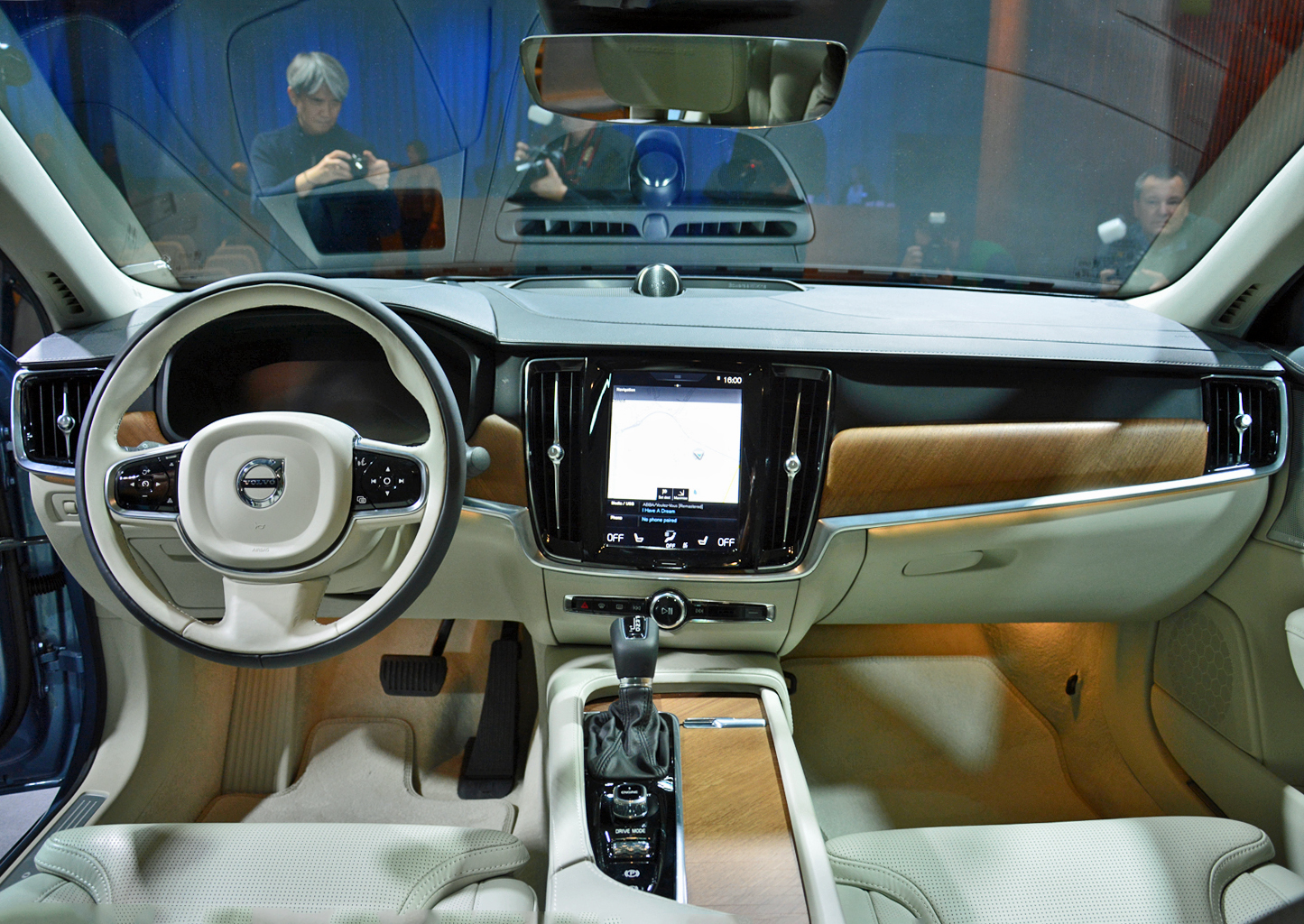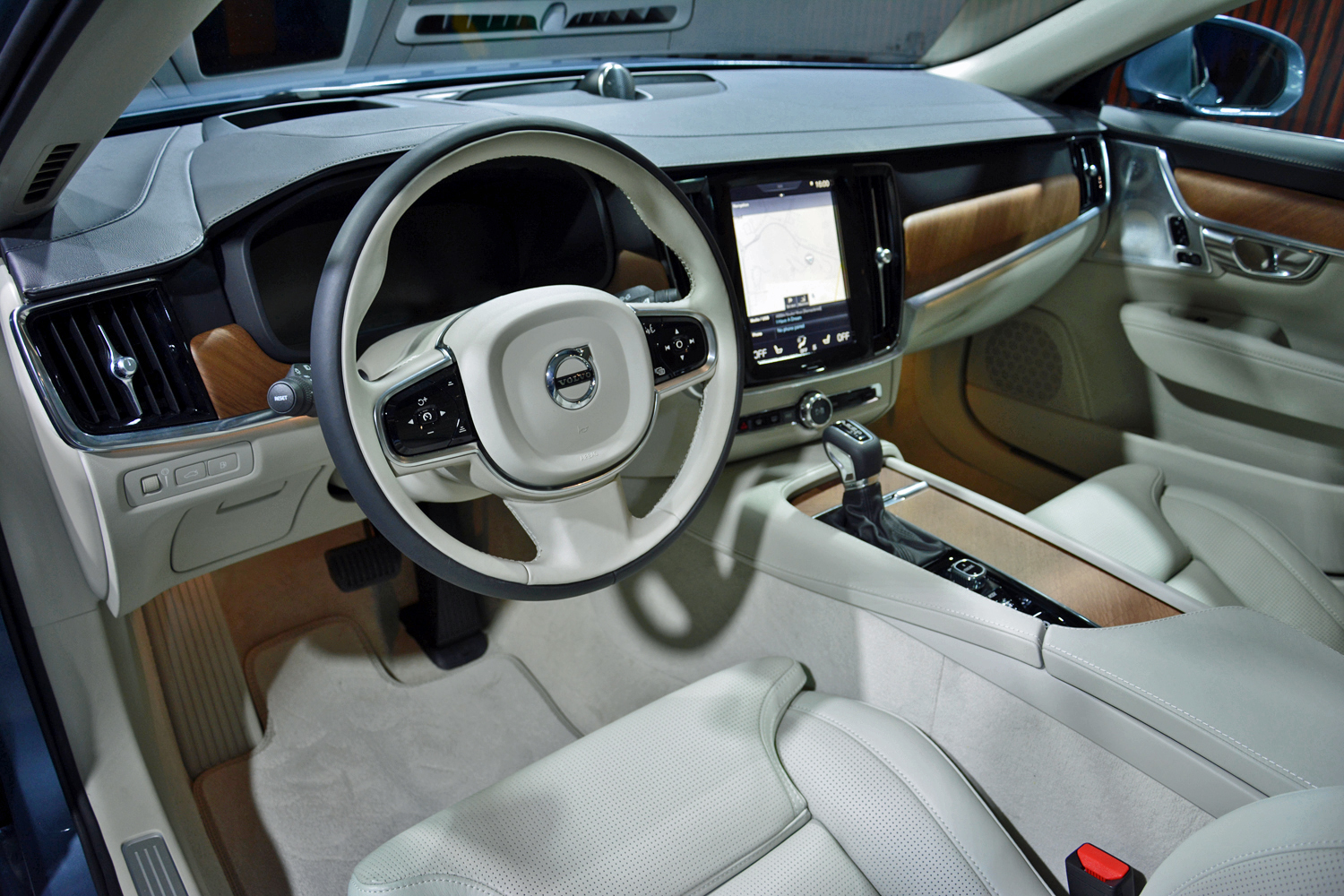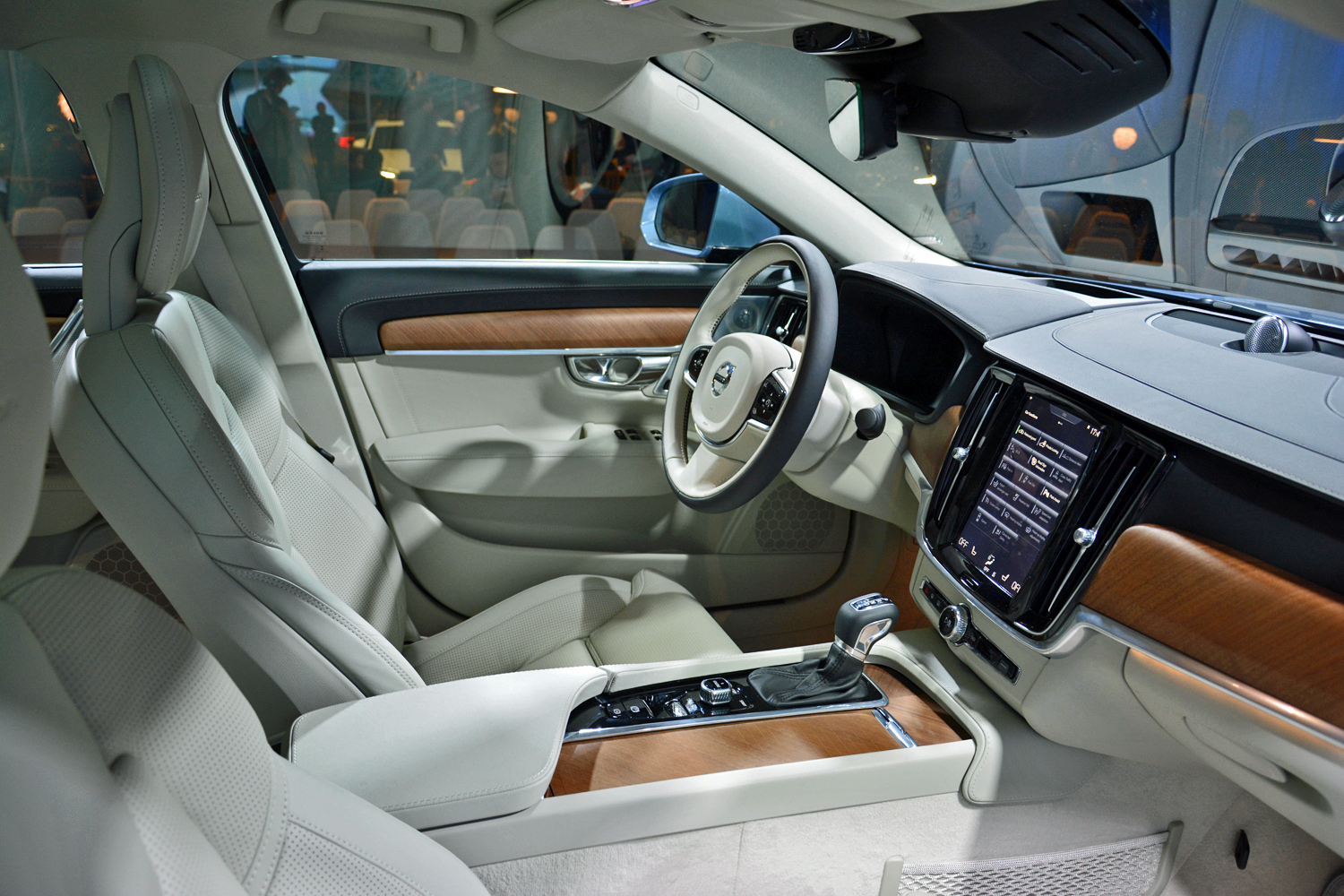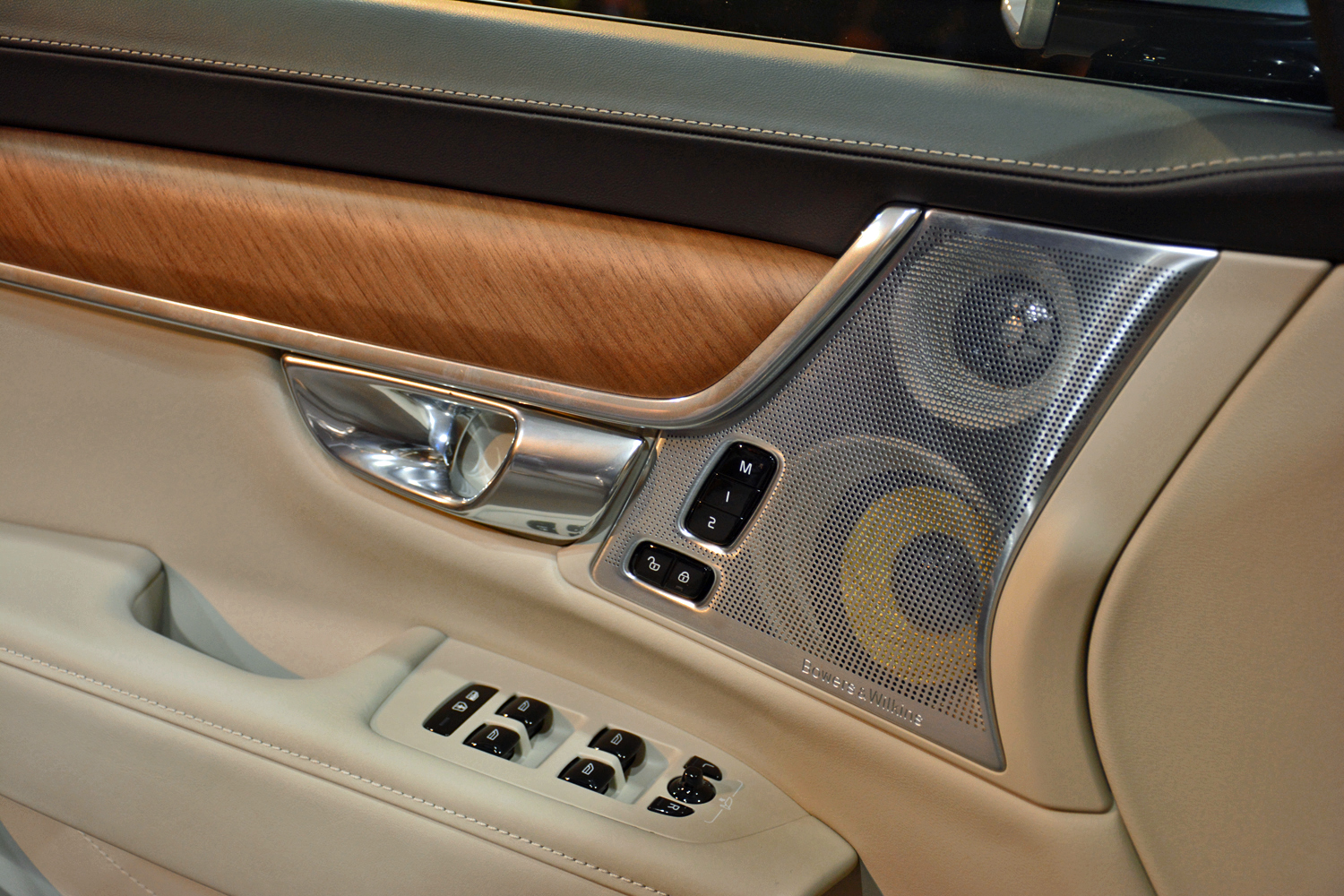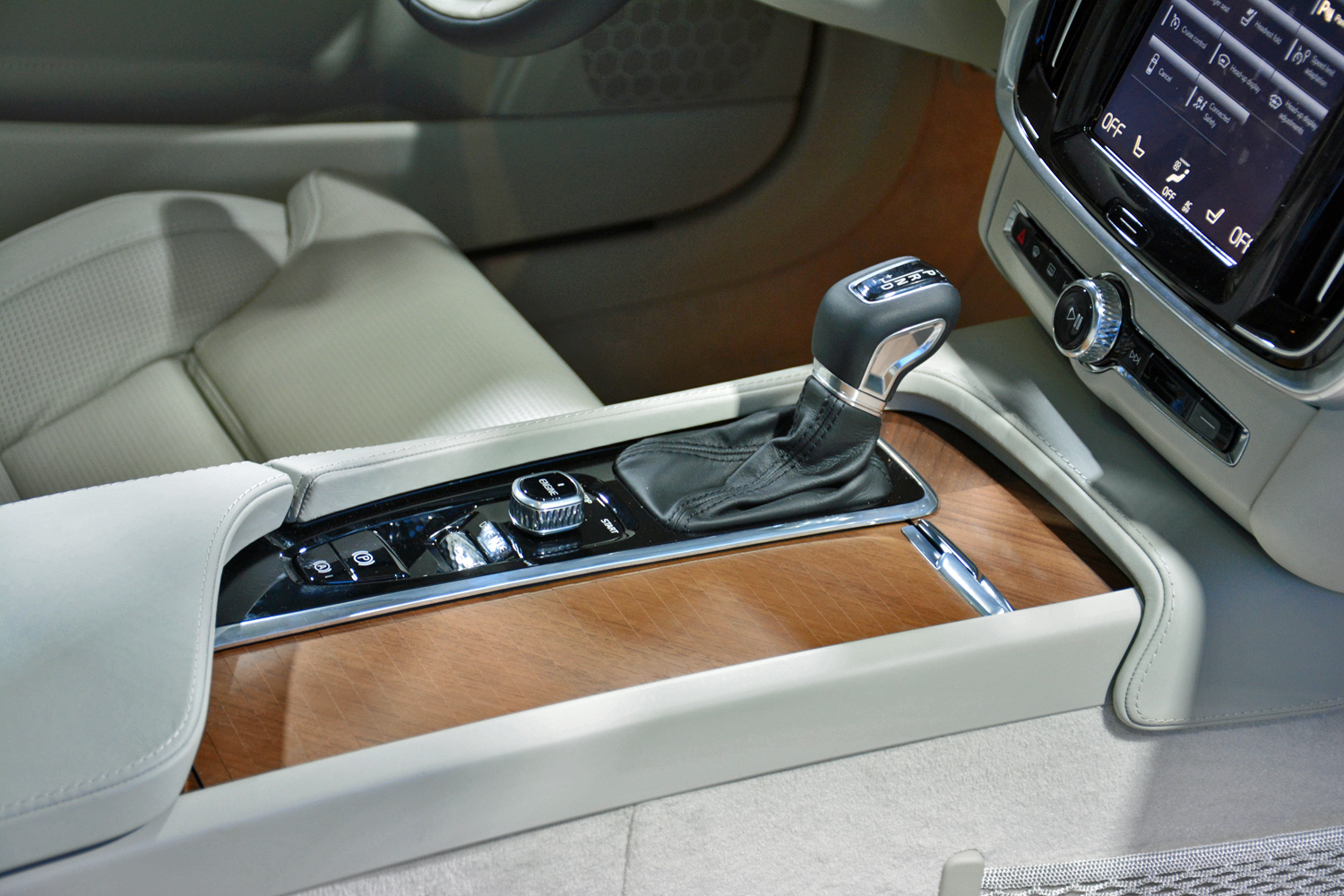Following several leaks, Volvo has introduced the 2017 S90 at a private event held in Gothenburg, Sweden, its home town. The S90 is a large, premium sedan designed to replace the S80 and slot at the top of the Volvo lineup.
The leaked 1/43-scale models that popped up online in the past few weeks gave us a decent idea of what to expect from the S90, but they didn’t tell the whole story. Up front, Volvo’s newest sedan boasts an elegant-looking front end characterized by a large grille with 23 chromed vertical slats, a short overhang, and swept-back headlights with integrated T-shaped LED daytime running lights called Thor’s hammer in Volvo-speak.
The roof line peaks right above the driver and gently slopes down towards the trunk lid, a styling cue that gives the S90 a sleek, coupe-like silhouette. The back end gets a tall trunk lid that frees up a generous amount of trunk space and C-shaped tail lamps that emphasize the sedan’s width. Markedly inspired by the stunning Concept Coupe shown at the 2013 Frankfurt Motor Show, the S90 breaks all visual ties with the outgoing S80 and becomes the most stylish four-door sedan Volvo has ever built.
“We wanted to design a car that enhances the driver’s life, not a sedan that’s merely a status symbol,” explains designer Thomas Ingenlath.
The S90 offers space for five passengers in a spacious, well-lit cabin built using upscale materials such as soft leather, glass buttons, and open-pore wood. The sedan’s navigation, connectivity, climate control, and entertainment functions are grouped in a state-of-the-art infotainment system controlled by a large tablet-like touch screen whose display is three times brighter than that of an iPad. Grouping key functions into the touch screen also gave Volvo designers the possibility of fitting the S90 with an uncluttered, crisp-looking dashboard underlined by an elegant strip of chrome trim.
Harnessing the benefits of economies of scale, Volvo has built the S90 on the same modular Scalable Platform Architecture as the second-generation XC90. Volvo told Digital Trends that U.S.-spec models will be offered with two gasoline-burning four-cylinder engines called T5 and T6, respectively, and a gasoline-electric plug-in hybrid drivetrain known as T8. The 407-hp hybrid drivetrain sends the S90 from zero to 62 mph in 5.2 seconds, and it provides it with an all-electric range of over 30 miles.
The S90 wouldn’t be a Volvo if it didn’t come equipped with a long list of safety features. Notably, it comes standard with a semi-autonomous technology called Pilot Assist that keeps the car in its lane thanks to sensors that read the lane markings. Active at speeds of up to 80 mph, Pilot Assist paves the way for Volvo’s first-ever fully autonomous vehicle.
The S90 also ushers in a large animal detection technology that, as its name implies, identifies animals such as moose, elk, and horses. The system warns the driver if it senses that a large animal is in standing the road, and it automatically applies the brakes if a collision is imminent.
The 2017 Volvo S90 will be shown to the public for the first time next month at the Detroit Motor Show. It will go on sale online shortly after, and the first examples will arrive on dealer lots next June. Pricing information will be published closer to the car’s launch date.
What’s next?
Staying true to tradition, the S90 will spawn a roomy station wagon named V90 and a more rugged family hauler called V90 Cross Country. Surprisingly, Lex Kerssemakers, Volvo’s U.S. boss, told Digital Trends both versions could be sold on our shores.
Kerssemakers also confirmed the arrival of a long-wheelbase S90, and he told us it will be designed with the U.S. market in mind. However, he isn’t bullish about the idea of a hot-rodded, Polestar-tuned version of the S90.
“I’m not sure if this is the right car for a Polestar version. I wouldn’t exclude it, but it’s not in the plans right now.”
Editors' Recommendations
- Volvo EM90 electric minivan: price, release date, range, and more
- Volvo EX90 price, range, release date, specs, and more
- No mere EV, the sensor-stuffed EX90 is Volvo’s towering tech flagship
- Sony wants you to play your summer soundtrack on its new wireless speakers
- NASA wants your help in navigating its rovers around Mars

